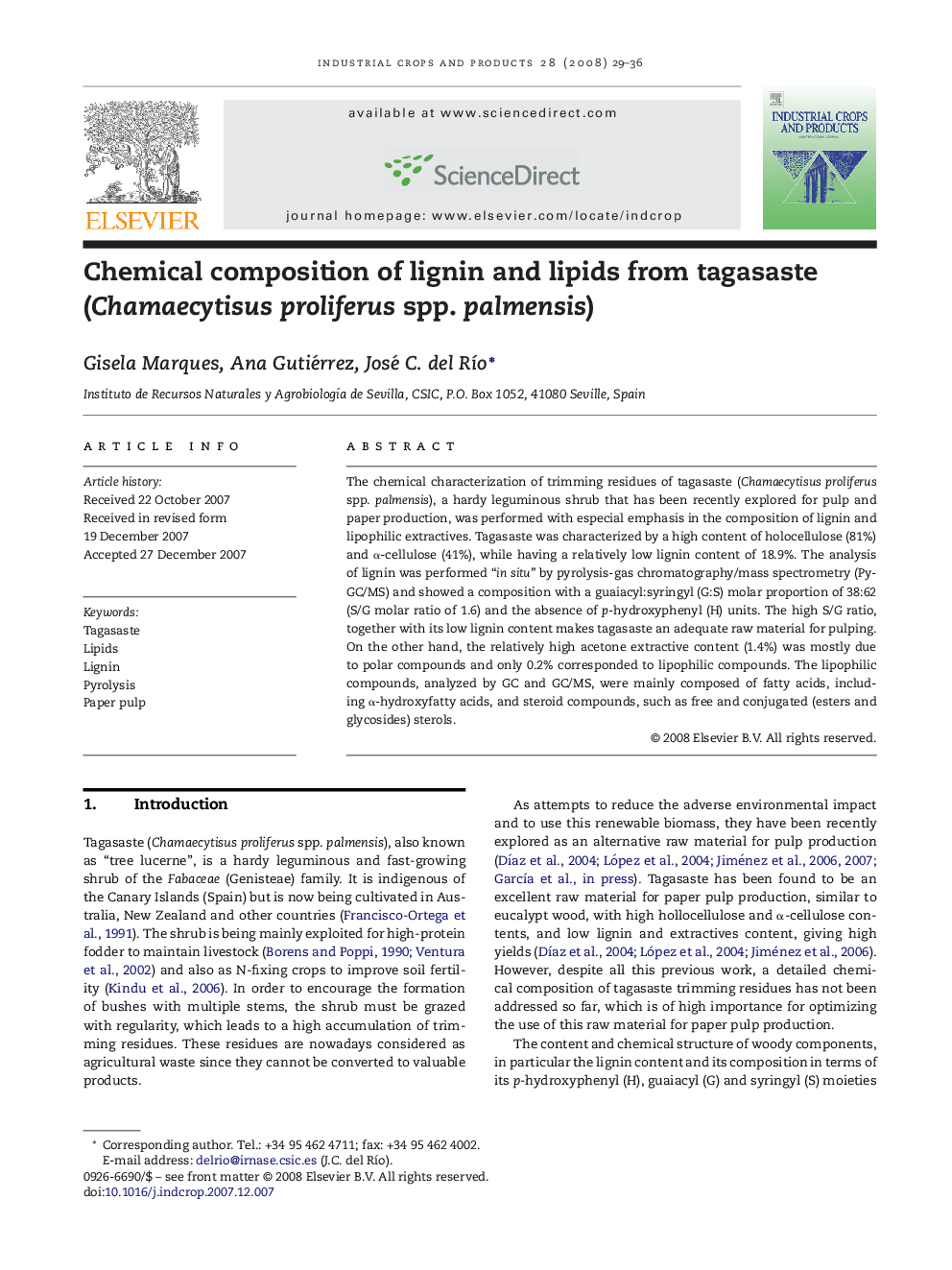| Article ID | Journal | Published Year | Pages | File Type |
|---|---|---|---|---|
| 4515069 | Industrial Crops and Products | 2008 | 8 Pages |
Abstract
The chemical characterization of trimming residues of tagasaste (Chamaecytisus proliferus spp. palmensis), a hardy leguminous shrub that has been recently explored for pulp and paper production, was performed with especial emphasis in the composition of lignin and lipophilic extractives. Tagasaste was characterized by a high content of holocellulose (81%) and α-cellulose (41%), while having a relatively low lignin content of 18.9%. The analysis of lignin was performed “in situ” by pyrolysis-gas chromatography/mass spectrometry (Py-GC/MS) and showed a composition with a guaiacyl:syringyl (G:S) molar proportion of 38:62 (S/G molar ratio of 1.6) and the absence of p-hydroxyphenyl (H) units. The high S/G ratio, together with its low lignin content makes tagasaste an adequate raw material for pulping. On the other hand, the relatively high acetone extractive content (1.4%) was mostly due to polar compounds and only 0.2% corresponded to lipophilic compounds. The lipophilic compounds, analyzed by GC and GC/MS, were mainly composed of fatty acids, including α-hydroxyfatty acids, and steroid compounds, such as free and conjugated (esters and glycosides) sterols.
Related Topics
Life Sciences
Agricultural and Biological Sciences
Agronomy and Crop Science
Authors
Gisela Marques, Ana Gutiérrez, José C. del RÃo,
